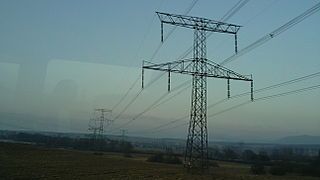From Guest Blogger Tom Grant: Above vs. Underground — The Debate on Power Lines in Communities

It would seem most homeowners would want to wish away aboveground lines, those susceptible to outages as well as possibly lowering the overall pricing of houses. In 2012, a DC neighborhood, met with severe weather and ongoing power outage, desired modification to its power lines.
Why Not Underground?
Considering the obstruction to aesthetic, the threat to animals such as squirrels, and power lines’ susceptibility to severe weather, it would seem the choice to place utility wires underneath the ground is a no brainer. However, the costs of modification and ongoing logistics are high enough to raise some legislators’ brows.
DC in Summer of 2012
In the summer of 2012, a severe storm destroyed power lines, leaving residents across a number of states without power. In addition to the immediate threat to daily living, residents are plagued by the threat of future inconveniences. They’re determined to plan so it never happens again.
Residents Speak
Residents in a DC neighborhood demanded something be done about the power lines after the disaster, but the notion reminded officials of a ‘wildly’ high estimate stemming from Pepco. It seems the rearrangement is not as simple or cheap as demanding it in a town meeting.
Pepco told the DDOT that it would cost an upward of $60 million to bury the lines along one stretch of avenue of a neighborhood. All resident and commercial properties would have to be ‘rewired,’ along with the actual destruction of present lines and poles, and alignment of new wires underground. And, of course, estimates would rise as the prices of materials continues to rise. Bloggers in DC, like Kevin Kerekes in New Jersey, relay opinions and synopses to the public regarding urban planning and development.
High Costs of Underground Wires?
Scenic America mention burying wires costs $500,000 to $3 million per mile. That’s a bit opposed to Pepco’s estimate. Additionally, Pepco estimated each residence would represent about $15,000 toward the cost, yet a San Francisco firm with experience mentioned the estimate should be closer to $2,000 per residence.
What’s the Best Solution?
Cities and neighborhoods have to work within a budget, and some cities don’t have the wages it takes to transfer overhead wires underground. In addition, some governments question the reliability of the enterprise and the practical return on investment. Some officials balk at estimates like those coming from Pepco, fearing the incentives of suppliers are not aligned with meager budgets and the overall welfare of the larger public.
It seems underground structuring of utilities and lines are the better solution, but a large number of neighborhoods don’t have the luxury of modern-day foresight. For many occupants of antiquated neighborhoods, the lines may stand for all time, or until a severe weather storm destroys the present establishment. Either way, residents hope to keep their power and cities seek to perform within budget.
